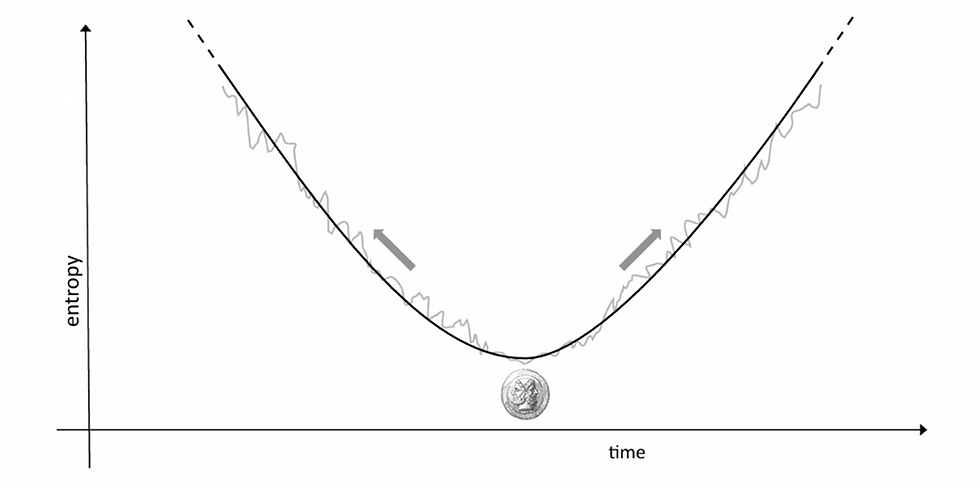We Shouldn’t Exist: The Matter-Antimatter Annihilation
- JYP Admin

- Sep 2, 2020
- 4 min read
Updated: Nov 4, 2023
Author: Jay Nolledo

If we were to ask random people how the universe was created, the popular answer would be the Big Bang theory. The one you always read on one of those thick and confusing science books (the ones that you don’t read). The Big Bang theory is the leading explanation on how the universe began; however, some things just don’t add up.
According to the Big Bang theory, the Big Bang should have created equal amounts of matter and antimatter during the early stages of the universe. Today, there is almost no antimatter to be found, and no one knows why. Everything we see on earth and even outside the earth (such as the stars, galaxies, super clusters) - almost everything seems to be made up of matter, and not antimatter.
Matter and antimatter particles are identical; in fact, they share the same mass. However, they are oppositely-charged. Matter-antimatter particles were randomly popping in and out of existence during the early stages of the Big Bang when our universe was hot and dense. They are always created in pairs, and if they come in contact with one another, they annihilate one another, leaving behind nothing but energy. So in theory, we shouldn’t exist. Everything in the universe should be nothing but leftover energy.
But, we do exist, right? Why is that?
Scientists are eager to find answers to explain why there is an asymmetry between matter and antimatter. Studies suggest that there are actually two options: first, the universe was just simply born with more matter than antimatter. Else, maybe something happened during the early stages of the Big Bang that caused the asymmetry of matter-antimatter particles. Both these ideas are great, but the first one is scientifically untestable because the entire universe needs to be recreated. The second idea, in contrast, is quite interesting. In order to test the second idea, a replication of the extremely high energy states immediately after the Big Bang is needed. This helps in understanding how matter and antimatter particles behaved in such conditions.
How exactly do you replicate the high energy Big Bang environment?
The best way to recreate the environment is by smashing particles together at near-light velocities in a particle accelerator.
There have been numerous experiments conducted in the past to further understand the asymmetry of matter and antimatter.
In the late 1960s, Russian physicist Andrei Sakharov proposed a set of three conditions necessary for a baryon-generating interaction to produce matter and antimatter at different rates. This is called baryogenesis; the creation of more baryons than anti-baryons.
The conditions are as follows:
C-symmetry and CP-symmetry violation
There must be baryon-number-violating interactions
Interactions out of thermal equilibrium
C-symmetry and CP-symmetry violation
C-symmetry is defined as replacing particles with antiparticles while CP-Symmetry is replacing particles with mirror-reflected antiparticles. This is easy to achieve since they are both violated in many weak interactions involving strange, charm, and bottom quarks.
There must be baryon-number-violating interactions
Baryon-number-violating interactions are obviously needed to produce an excess of baryons over anti-baryons. However, it’s easier said than done. Experiments showed that the balance of quarks to antiquarks and leptons to antileptons are directly conserved. On the contrary, there isn't a straightforward conservation law for either one of those quantities individually.
Interactions out of thermal equilibrium
Lastly, this condition states that the rate of reaction which generates the baryon-asymmetry must be less than the rate of expansion of the universe. The particles and their antiparticle counterparts do not achieve thermal equilibrium due to the expanding, cooling universe with unstable particles (and/or antiparticles).
As mentioned earlier, the early stages of the universe is an extremely high energy environment. The energy is high enough to create every known particle in great amounts as per Einstein’s famous equation: E=mc^2. If the idea of particle creation and matter-antimatter works according to theory, equal amounts of matter and antimatter particles would be created and will all be interconverting into one another as the energy from the environment remains extremely high.
Unstable particles created in huge amounts will decay as the universe continues to expand and cool. And if the three conditions of Sakharov are met, they can lead to an excess amount of matter compared to antimatter. Physicists, however, are still working on generating visible frameworks that could give an excess amount of matter over antimatter.
Fun fact: Did you know that bananas produce antimatter?
Studies show that bananas produce positron (the antimatter counterpart of an electron) once every 75 minutes. This occurs primarily because bananas contain potassium-40, which is a naturally occurring isotope of potassium. Positron is ejected occasionally as the potassium-40 in the banana decays.
References
[1] CERN Accelerating science. (n.d.). Retrieved September 02, 2020, from https://home.cern/science/physics/matter-antimatter-asymmetry-problem
[2] Siegel, E. (2019, February 08). There's Almost No Antimatter In The Universe, And No One Knows Why. Retrieved September 02, 2020, from https://www.forbes.com/sites/startswithabang/2019/02/08/theres-almost-no-antimatter-in-the-universe-and-no-one-knows-why/
[3] Hobbs, B. (2016, June 23). Antimatter, annihilation and a universe that shouldn't exist. Retrieved September 02, 2020, from https://www.abc.net.au/news/science/2016-06-23/antimatter-explainer/7487354
[4] Nasirullah, P., Says:, D., Says:, B., Says:, A., & Says:, A. (n.d.). Retrieved September 02, 2020, from https://sites.psu.edu/dfnpassion2blog/2016/02/04/antimatter/

.png)




Comments